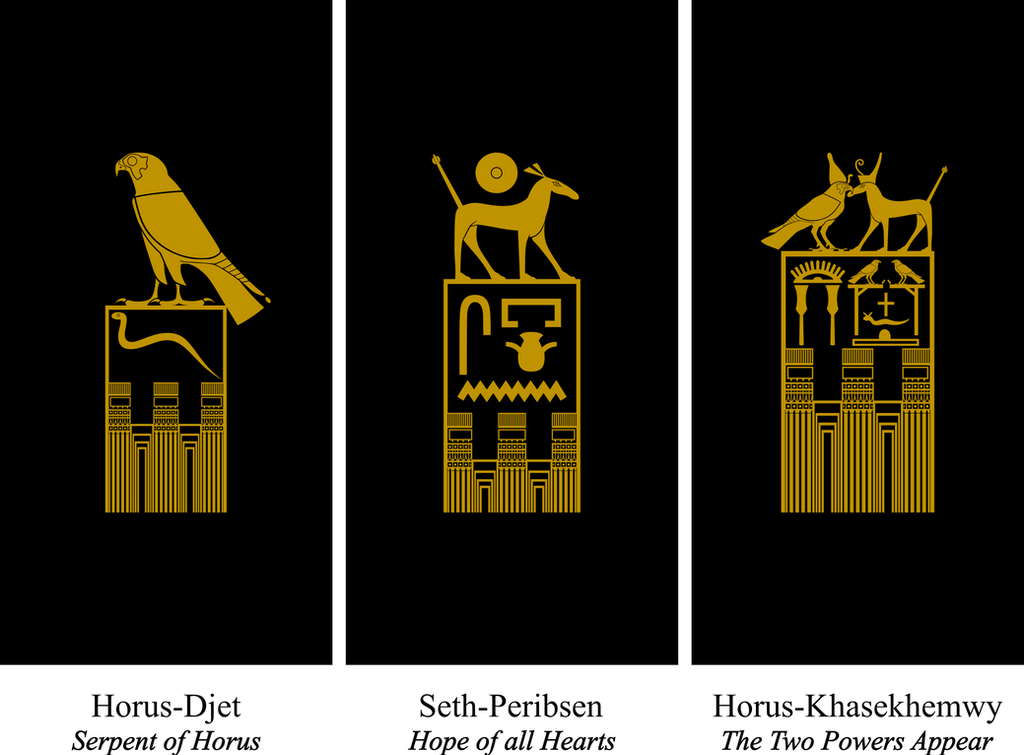HOME | DD
 Gouachevalier — Pharaohnic Standards
Gouachevalier — Pharaohnic Standards

#africa #african #falcon #nile #nileriver #ra #royal #sahara #saharan #set #seth #ancientegypt #egypt #egyptian #egyptianmythology #hieroglyph #hieroglyphic #hieroglyphics #hieroglyphs #horus #pharaoh #rosetta
Published: 2015-10-13 21:24:59 +0000 UTC; Views: 4802; Favourites: 82; Downloads: 7
Redirect to original
Description
The serekh ("facade") was an ornamentic vignette, combining a front view of a palace facade and a plan (top view) of the royal courtyard. It served as a sort of pre-cursor to the cartouche of later dynasties of Kemet, dating back to the pre-dynastic reign of King Ka, c. 3400 BC. Serekhs were normally used as a royal crest, accentuating and honouring the name of the reigning pharaoh. When naming the pharaoh, the hieroglyphs forming the king's name were placed inside a rectangular extension atop of the serekh, which represented the royal courtyard. Additionally, the falcon of the god Horus or (as in a few cases) the sha of Seth topped the serekh, showing the celestial patrons of the named king.During the early dynastic period kings had as many as three titles. The Horus name is the oldest and dates to the late pre-dynastic period. The Horus name was adopted by the king, when taking the throne. The Horus name of several early kings expresses a relationship with Horus. Aha refers to "Horus the fighter", Djer refers to "Horus the strong", etc. Later kings express ideals of kingship in their Horus names. Khasekhemwy refers to "Horus: the two powers are at peace", while Nebra refers to "Horus, Lord of the Sun".
1. King Djet, fourth pharaoh of the First Dynasty
2. King Peribsen, pharaoh of the Second Dynasty
3. King Khasekhemwy, last pharaoh of the Second Dynasty
Related content
Comments: 8

Are these real? The description is very detailed and the images appear possibly real.
👍: 0 ⏩: 1

Well, they probably never existed in flag form (creative license, hyuk hyuk), but the images themselves are, certainly.
👍: 0 ⏩: 1

I expected they were creative creations, but your descriptions were very detailed so I thought possibly they could have been found in tombs.
👍: 0 ⏩: 1

It appears that way (the serekh of King Djet featured at the Louvre is described as having been found at his tomb in Abydos).
👍: 0 ⏩: 0

Thanks for the info on ancient Egyptian names
👍: 0 ⏩: 0

I call it "Determined Procrastination!"
👍: 0 ⏩: 1


























